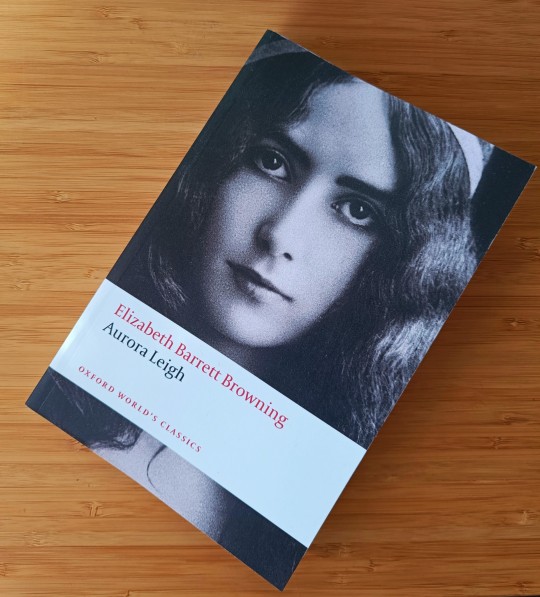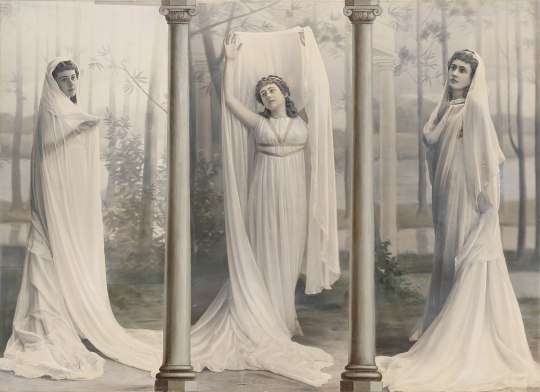#nineteenth century literature
Text
New Book Club for Autumn 2023!
Announcing Wildfell Weekly, a substack read-a-long for Anne Brontë's novel The Tenant of Wildfell Hall!

You must go back with me to the autumn of 1827.
A new tenant has taken up residence in old Wildfell Hall and Mr. Gilbert Markham finds himself very intrigued. But the widow Mrs. Helen Graham is more than what she seems, and as rumors about her start to fly, she reveals to a doubting Gilbert the truth about the disastrous marriage she left behind.
Anne Brontë differed from her sisters Charlotte (Jane Eyre) and Emily (Wuthering Heights) in favoring a Realist rather than Romantic approach to her writing. In Tenant she explored themes of domestic violence, alcoholism and addiction, gender relations, motherhood and marriage, and the ability of women to define their own lives with an unflinching desire to depict what she saw to be true. While now considered among the first feminist novels, critics of Anne's day were shocked by a book they found coarse, brutal, and overly graphic.
So starting October 26, 2023 and until June 10, 2024, let's read together a story one nineteenth century critic called "utterly unfit to be put in the hands of girls"!
Find More Information about the Project and Subscribe Here!
#anne brontë#the tenant of wildfell hall#british literature#tumblr book club#nineteenth century literature#classic literature#historical literature#book stubstacks#dracula daily#whale weekly#letters from watson#les mis letters#wildfell weekly#brontë sisters
311 notes
·
View notes
Text

#andrei bolkonsky#andrey bolkonsky#war and peace#war and peace book#book memes#classic book lover#classic book reader#classic book meme#classic book memes#classic books#tolstoi#Tolstoy#Tolstoy book#Leo Tolstoy#book characters#old books#nineteenth century literature#old book reader
24 notes
·
View notes
Text
I would like to talk for a few moments about my enduring and all consuming love for Mary Shelley.
Today would have been Mary's (because we would be on first name terms) 226th birthday. It has been designated 'Frankenstein Day' after her most well known and influential work.
The influence of Frankenstein cannot be overstated. Without it the horror and sci fi genres would not look the same as they do now. The fact that she started the book as something to do while she was on holiday and the weather was terrible is fascinating to me. We were so close to not having this book. She came up with these ground breaking ideas and executed them so beautifully because she was bored. She was eighteen when she did this. I can barely fathom this.
Mary's personal life was no less intriguing than her writing. She was raised by learned and free thinking parents. Her mother was Mary Wollstonecraft, one of the earliest feminist writers. She died, tragically as so many women did in the late eighteenth century, giving birth to her and Mary was raised by her father and his second wife. Her father always surrounded himself with the most brilliant minds of the day and Mary absorbed their ideas.
Her marriage to Percy Bysse Shelley is well documented. She was his second wife, his first wife, Harriet, having taken her own life, possibly as a response to Percy's affair with Mary. Their relationship was passionate and tempestuous, but their love and devotion to each other was genuine. When Percy died, in a sailing accident off the coast of Italy, Mary apparently kept his heart wrapped in a silk scarf for the rest of her life.
She also apparently learned to write her own name by tracing it on her mother's grave.
However goth you are, you will never be as goth as Mary Shelley.
Mary continued to write after her husband's death, keeping herself and her children comfortable. Her other words often dealt with strikingly modern sci Fi themes, such as The Last Man about a man who thinks he is the only one left after a pandemic. She also wrote historical novels, including one about Perkins Warbeck, who claimed to be one of the Princes in the tower to usurp the throne from Henry VII.
She died in 1851 at the age of 53. I cannot imagine what my life would have been without her.

#mary shelley#frankenstein#gothic literature#gothic fiction#nineteenth century fiction#nineteenth century literature#fiction by women#classics#classic literature#horror fiction#gothic horror#sci fi
6 notes
·
View notes
Text

—August Strindberg
[Solnedgång på havet, 1883]
Selected Poems of August Strindberg, editor and translator Lotta M. Lofgren
#august strindberg#strindberg#swedish literature#nineteenth century literature#nineteenth century poetry#swedish poetry
2 notes
·
View notes
Text
ATTENTION ROMANTICS, JANEITES, BYRONISTS, GEORGIANS, & OTHER 19TH CENTURY NERDS!
this website jane austen's music has resources all about the music jane austen composed by hand, like a link to this song captivity.
this website romantic-era songs has recordings of a bunch of music that was popular in the romantic era, including recordings of poetic works that were originally intended to be set to music. examples incl. lord byron's famous poems vision of belshazzar (a real banger!) & she walks in beauty (not what i expected having read it beforehand without it's music, but it was byron's own favorite to listen to). i really love this one the waters of elle by lady caroline lamb, also composed by isaac nathan. he was a famous jewish-english musician who later relocated to australia and introduced classical music there, & is thus sometimes called "the father of australian music" (apparently, according to his wiki, he was also the first person in the southern hemisphere to die in a tram incident after he got there... oddly specific factoid, but alright).
#literature#english literature#lord byron#romanticism#history#poetry#music#songs#19th century#nineteenth century#recordings#compositions#composers#isaac nathan#caroline lamb#romantic era#the romantics#the young romantics#romantics#romantic poetry#music history
94 notes
·
View notes
Text

#literature#funny memes#funny#literature memes#memes#lit memes#meme#fypシ#russian literature#psychological thriller#crime and punishment#nineteenth century#19th century literature#russian#fyodor dostoyevsky#fyodor dostoevsky#dostoyevsky#dostoevsky#Raskolnikov
24 notes
·
View notes
Text

Excerpt of Jane Eyre (1847) by English novelist Charlotte Brontë (1816–1855)
#quotes#jane eyre#charlotte bronte#bronte sisters#victorian literature#women in literature#women writers#1840s#nineteenth century#literature#english literature#classic literature
14 notes
·
View notes
Text
Another novelist among the friends of the family was Jane’s favourite, Frances Burney, who had written Evelina and Cecilia, and who now was publishing her novel Camilla by subscription. A bit like crowd-funding today, subscribers got the privilege of having their names listed in the front of the finished book. The list for Camilla reads rather like a sisterhood of Georgian female novelists, because so many of them supported their fellow author. It includes a Mrs Radcliffe, and Miss Edgeworth (author of Belinda) and indeed a nineteen-year-old ‘Miss J. Austen of Steventon’, whose guinea must have been paid for her by her father.
Lucy Worsley, Jane Austen At Home
18 notes
·
View notes
Text
my bad habit of mixing up John Thornton (North And South) and John Thorpe (Northanger Abbey) is going to end in tragedy one of these days
#John Thornton#John Thorpe#North & South#North And South#Northanger Abbey#these two men are nothing alike#but their vaguely similar names trip me up ALL THE TIME#nineteenth century literature problems I guess#Elizabeth Gaskell#Jane Austen#literature
16 notes
·
View notes
Text
VIC LIT DISASTER SHOWDOWN
ROUND ONE: 02/06/2023 - 02/13/2023
MAD:
henry jekyll (strange case of dr. jekyll and mr. hyde) v. jack seward (dracula)
BAD:
henry wotton (the picture of dorian gray) v. james steerforth (david copperfield)
DANGEROUS TO KNOW:
dorian gray (the picture of dorian gray) v. john jasper (the mystery of edwin drood)
BRONTËBUSTER:
edward rochester (jane eyre) v. heathcliff (wuthering heights)
AN OFFICER AND A RAKE:
george osborne (vanity fair) v. sergeant troy (far from the madding crowd)
GUESS I’LL DIE:
jude fawley (jude the obscure) v. sydney carton (a tale of two cities)
POOR LITTLE MEOW MEOW:
basil hallward (the picture of dorian gray) v. r.m. renfield (dracula)
#i am using the power of polls in exactly the way expected#19th century literature#victorian literature#brackets#;i am unbodied by thy books.#;nicky polls the populace.#;the long nineteenth century.#;vic lit disaster showdown.
29 notes
·
View notes
Text
I'm reading articles for my dissertation and I kind of want to fight the next nineteenth-century scholar going on about how British women couldn't be published as women until later in the century. I know the history of the early English novel was misrepresented for a long time as some great man arc of literary development even though at the time novels were often popularly associated with known female authors like Frances Burney and Ann Radcliffe but come on.
#nineteenth century scholars read eighteenth century literature challenge!#if you're going to talk about it!!#anghraine babbles#anghraine rants#ivory tower blogging#eighteenth century blogging
23 notes
·
View notes
Text
I made a post about it a long time ago: there is a cyclical phenomenon in the world of literature where suddenly you have a massive rise in popularity and appreciation of "behemoth-novels", and then it is rejected just as hard because everybody gets bored by it and wishes for something simpler and smaller.
I'll explain. I was thinking about the trend born at the turn of the 21st century, to not just make a fantasy book, or a fantasy trilogy, as it was usually the case until now, or just a series of short stories and novellas, but rather grow massive series of very thick novels by the dozen. And how, in return, it caused an immense love, appreciation and admiration for these "behemoth-sagas", these enormous series that have as much pages and characters as the Bible, takes decades to be completed, and that you can't possibly hold in your arms even if you use both. Doing just one petty little fantasy novel was seen as a kid playing in a sandbox - while the big boys and big girls did big books. This trend was followed by the rise in popularity and glory of hard worldbuilding in fantasy - and I am not speaking of "condensed hard worldbuilding" a la Tolkien, no I am speaking of expensive, if not hyper-expensive, hard worldbuilding.
You know the series I am talking about. The "door-stoppers", the "table-holders", these series where you are told by fan "You must REALLY commit to the thing". Robin Hobb's sagas ; The Wheel of Time ; A Song of Ice and Fire ; the Sanderson book series - well, you know the kind of "mega-fantasies".
Now, while these series are still considered classics and landmarks of fantasy, they are falling in disfavor due to people discovering or rediscovering the joys of simpler fantasy stories, of fantasy trilogies, duologies or even stand-alone novels. It is not a complete shift, as you still find a lot of advocates and defenders of the "mega-sagas" of fantasy - but this was the starting point of my thought about the cycles of literature.
Because this whole shift of balance in English-speaking fantasy literature (a shift that did not exist in French-speaking fantasy since French authors are not keen on mega-sagas and are more into single novels to trilogies) ; this whole shift, from a French person's point of view, happened already. Many times before.
France is known as one of the big literature countries. We are the land of the books! And of the authors! And of the harsh critics! As such it is very easy to pick up quick summaries and overviews of French literature as a whole (and by extension European literature, but since I am French I'll focus on French stuff) - and when you do that, you see the exact same cycle happen. We call them by many names: "romans-fleuves" (river-novels), "romans-sagas", (saga novels), we call them cycles and frescos and monuments ; but they keep returning every one or two centuries, they become all the fashion and all the trend and all the fad, and then the hype dies out and they are rejected for being too heavy, too big, taking too much place on the shelf, and instead of bloated, obese literature, people turn to skinny novellas and slender stories.
The oldest clear manifestation of this phenomenon in French literature is without a doubt the first part of the 17th century. The 17th century opened with the creation of some of the biggest and longest novels there ever was in French literature - and people LOVED it. They were the bestsellers, they were what everybody talked about, they were the model everybody referenced and followed. The most famous of them was "L'Astrée" by Honoré d'Urfé, one of the monuments of 17th century literature - one novel published over 20 years. Because it is divided into six parts... these six parts are composed of forty stories... and these stories are told over sixty books. Another famous example is the Scudéry siblings "Artamène ou le Grand Cyrus", which still holds the title of longest novel of French literature, with the record of over 2 100 000 words published over four years.
These novels defined the trends and culture of 17th century literature and yet... Nobody knows them today. They are not taught about in school. You ask a random French person on the street, they never heard about it. They haven't been published since centuries due to their enormous size - and even if they get reprinted today, it is only in professional, annotated editions for study. Because by the turn of the 17th century, the enormousness and "constant flow" of those river-novels tired out and bored the same readers that had hyped it up - and the next generations of writers came up in return with the first "true" novellas and short novels of French literature, which became massive hits overshadowing the river-novels as "has-beens", and unlike the Astrée or the Grand Cyrus which fell into oblivion, they are still being taught about as early as middle school: La Princesse de Clèves for example. This was also by the end of the 17th century that the genre of the fairytale knew a true boom and became all the trend: Perrault's fairytales for example, which are literaly one of the founding parts of French culture today.
But this entire phenomenon repeated itself in the 19th century! Because when you think of the monuments of the 19th century literature in France, you think of two mega-sagas that have nothing to envy to today's fantasy-behemoths. On one side, Balzac's Comédie Humaine, on the other Zola's Rougon-Macquart. Just like the fantasy behemoths, they are enormous ensemble of novels sharing a same universe (the Comédie Humaine is a set of 48 novels and just as much short stories all happening in parallel, at the same time, in neighboring areas ; the Rougon-Macquart cycle is made of twenty novels detailling a family's adventures throughout generations). Just like these fantasy behemoths, they also have a great care of realism and "hard worldbuilding". Zola was the "pope of naturalism" (the hardcore branch of realism), and his books were so thoroughly researched and so faithful to reality they are still used by historians today ; while Balzac delved much more into fantasy and supernatural and mysticism, he also was one of the great realist authors, who made sure his novels were coherent with each other, took care to depict the real-life cities and landscapes of his time, and through his work he intended to paint the most exact portrait (or caricature) of the society of France, of its classes and archetypes, as sort of gigantic fictionalized documentary. And just like the fantasy behemoths, they are now landmarks of literature considered classics of the canon.
... And just like them, while they are great classics and admired models, people also complain about the books being too thick, about there being too many characters, of the novels taking up all the shelves, and conclude that trying to get involved into these constructed universes is just losing your time.
The only difference between these two literary monuments and the fantasy-behemoths (outside of the fact one is fantasy the other is not... Even though Balzac included supernatural stories and "fantastique" elements in his Comédie humaine) is that the fantasy-behemoths tend to be one enormous series that never end but tells one core story around a given core of characters. Balzac and Zola's ensembles are rather a set of independant novels that can be read as stand-alones, but that have recurring characters, references to events happening in other stories, and form when put together a greater whole (the Rougon-Macquart cycle especially since it tells the story of one family from its beginning to its end).
I honestly don't have any point with this. There was no goal for this thought experience - I just wanted to point out how the enthusiasm and borderline fanaticism for "mega-fantasies" recalls these enormous projects of the like of Balzac and Zola, and the forgotten successes of the river-novels of the 17th century. Literature is a cycle that keeps repeating itself...
#literature#fantasy#fantasy series#worldbuilding#hard worldbuilding#book series#french literature#realism#zola#balzac#l'astrée#scudéry#french renaissance#nineteenth century#19th century#france
4 notes
·
View notes
Text
I've just acquired a copy of Elizabeth Barrett Browning's verse novel Aurora Leigh which I am very excited to start reading but can I just take a moment to draw attention to this arresting cover image.

It's a photograph of the French dancer Cléo de Mérode taken by Léopold-Émile Reutlinger, a German-Jewish photographer who took some truly exquisite images. It's also highly anachronistic since neither model or photographer were even born when Aurora Leigh was published in 1856 (naughty Oxford University Press!) but every time I see it lying around the house I'm drawn to it. So a good cover in that sense I think!
Some more photographs by Reutlinger:
French Soprano Aino Ackté

French actress Geneviève Lantelme

Poet and dramatist Edmond Rostand (the guy who wrote Cyrano de Bergerac)

#elizabeth barrett browning#Elizabeth Barrett#cléo de mérode#Léopold-Émile Reutlinger#Aino Ackté#Geneviève Lantelme#cyrano de bergerac#edmond rostand#aurora leigh#nineteenth century#fashion photography#art photography#vintage photography#edwardian#book cover#books#victorian#classic literature#english literature#literary
2 notes
·
View notes
Text
"The emergence of a society that was economically grounded in the extraction of finite materials was understood to mean the emergence of a society that was, in a new way, unsustainable for the long run. In this sense, the nineteenth-century grappling with industrial extractivism previews the mode of living that we all experience today, a way of life that proceeds by depleting the future - in other words, the long exhaustion" (9).
Elizabeth Carolyn Miller: Extraction Ecologies and the Literature of the Long Exhaustion (2021)
#ecocriticism#ecology#extraction#literature#literary criticism#climate change#climate crisis#victorian era#late 1800s#1800s#nineteenth century#Victorian ecologies#pollution#mining#environment#theory#enviromentalism#history
72 notes
·
View notes
Text
it’s just me and my picnic blanket and my cupcakes against the world
#currently in the process of being cooked alive by the sun while reading about nineteenth century norwegian literature#mine
6 notes
·
View notes
